At Protea Financial, we understand that in the competitive world of winemaking, managing inventory effectively is paramount to profitability. Wine inventory costing, with its unique challenges related to aging, vintages, and fluctuating demand, often presents a significant hurdle. Traditional methods can struggle to keep pace, leading to inaccuracies and lost revenue.
Our experts want to explore the crucial role of technology in revolutionizing wine inventory costing, offering wineries a path to greater accuracy, control, and financial success. We’ll delve into specific technological solutions and their impact, empowering you to make informed decisions about your inventory management strategy and, ultimately, your bottom line.
Understanding the Complexities of Wine Inventory Costing
Before we discuss technology, it’s vital to understand the intricacies of wine inventory costing. Unlike many industries, wine production is a long, complex process. From grape cultivation to bottling and aging, each stage adds costs that must be accurately tracked and allocated. The experts here at Protea Financial have seen firsthand how traditional costing methods can be cumbersome and error-prone, especially when dealing with:
- Multiple Vintages: Each vintage is unique, with varying quality and production costs. Accurately tracking these separately is crucial for pricing and profitability analysis—a key area we focus on with our clients.
- Aging Process: Wine aging can take months or years, incurring significant storage and opportunity costs. These must be factored into the final inventory value for accurate financial reporting.
- Bulk Wine Purchases: Wineries often purchase bulk wine, adding complexity to cost calculations. We help our clients determine the impact of bulk wine on overall inventory cost.
- Bottling and Labeling: These processes add further costs, including materials, labor, and packaging. Accurate allocation is essential for precise inventory valuation and effective cost management.
- Storage and Handling: Storing and handling wine requires specialized facilities and management. These costs, including temperature control and insurance, are crucial considerations for accurate costing.
The Limitations of Traditional Inventory Management
Traditional inventory management, often relying on manual processes and spreadsheets, struggles with the complexities of wine inventory costing. We regularly see these limitations impacting our clients:
- Inaccurate Costing: Manual data entry is prone to errors, leading to inaccurate inventory costs and unreliable financial reporting—a red flag for any business.
- Time-Consuming Processes: Manual tracking is incredibly time-consuming, diverting resources from more strategic activities—a cost many wineries can’t afford.
- Lack of Real-Time Visibility: Traditional methods often lack real-time insights into inventory, hindering informed decisions about pricing and sales.
- Difficulty in Tracking Aging Costs: Accurately allocating aging costs to specific vintages is challenging with manual methods, impacting long-term financial planning.
- Limited Reporting Capabilities: Generating detailed reports on inventory costs, sales, and profitability can be a significant undertaking, hindering timely financial analysis.

How Technology Revolutionizes Wine Inventory Costing
At Protea Financial, we champion technology as the solution to these challenges. Integrated software systems automate manual processes, providing greater accuracy, efficiency, and real-time visibility. Here’s how technology is transforming the landscape, from our perspective:
- Automated Data Capture: Barcodes, RFID tags, and other technologies automate data capture, eliminating manual entry and reducing errors—a key factor in accurate costing.
- Real-Time Inventory Tracking: Software systems provide real-time visibility into inventory levels, locations, and costs, enabling informed decisions about purchasing, pricing, and sales.
- Accurate Cost Allocation: Sophisticated costing algorithms accurately allocate costs to specific vintages, batches, and processes, providing a clear picture of profitability—essential for strategic decision-making.
- Streamlined Reporting: Software systems generate detailed reports on inventory costs, sales, and profitability, providing valuable insights for business decisions and financial planning.
- Improved Compliance: Technology helps wineries comply with regulatory requirements—a crucial aspect of our advisory services.
Key Technological Solutions for Wine Inventory Costing
We at Protea Financial recommend exploring these technological solutions:
- Enterprise Resource Planning (ERP) Systems: ERP systems integrate all aspects of a winery’s operations, including inventory, accounting, and sales—a holistic approach we advocate.
- Wine-Specific Inventory Management Software: These specialized systems address the unique challenges of wine inventory costing, including features for tracking vintages and aging costs.
- Point of Sale (POS) Systems: POS systems integrate with inventory software for real-time sales and inventory updates, optimizing pricing and sales strategies.
- Warehouse Management Systems (WMS): WMS systems help manage physical inventory, integrating with inventory software for a complete view of the inventory process.
- Business Intelligence (BI) Tools: BI tools analyze inventory data, providing insights into sales trends and profitability—essential for data-driven decision-making.
Implementing Technology for Wine Inventory Costing Starts with Protea Financial
We guide our clients through these key implementation steps:
- Assess Your Needs: Identify your specific inventory costing challenges.
- Research and Evaluate Solutions: Explore different software systems.
- Choose the Right Solution: Select a system that best meets your needs and budget.
- Develop an Implementation Plan: Help create a detailed plan for implementation.
- Suggest Staff Training: Ensure your staff knows to get trained on your new system.
The Benefits of Technology-Driven Wine Inventory Costing: The Protea Promise
We’ve seen these significant benefits firsthand:
- Improved Accuracy: Reduced errors and improved inventory cost accuracy.
- Increased Efficiency: Automated processes save time and resources.
- Real-Time Visibility: Valuable insights for decision-making.
- Better Cost Control: Improved profitability through accurate cost allocation.
- Improved Compliance: Meeting regulatory requirements.
- Enhanced Customer Service: Real-time inventory information leads to better customer service.
The Future of Technology in Wine Inventory Costing: A Protea Vision
We firmly believe the future of wine inventory costing is not just bright – it’s transformative. Emerging technologies, particularly artificial intelligence (AI) and machine learning (ML), are poised to revolutionize the industry in ways we’re only beginning to imagine.
We’re committed to staying at the forefront of these advancements, helping our clients leverage their potential for maximum impact. Here’s a glimpse into our vision for the future of wine inventory costing:
- Predictive Analytics for Optimized Inventory Levels
- Automated Cost Allocation with Machine Learning
- Real-Time Insights and Dynamic Pricing
- Enhanced Supply Chain Management
- Improved Quality Control with AI-Driven Analysis
- Personalized Customer Experiences
- Blockchain for Transparency and Traceability
Currently, we’re not just observing these trends – we’re actively preparing our clients to embrace them. We’re working to understand how these technologies can be integrated into existing systems, what the return on investment will be, and how wineries can best leverage them to achieve their business goals.
We believe that the future of wine inventory costing is not just about technology; it’s about partnering with experts who can help you navigate this rapidly evolving landscape. We’re here to help you discover the power of AI, machine learning, and other emerging technologies to optimize your inventory management, improve your profitability, and secure your future in the wine industry.

Reliable Partnerships Bring Technological Advancements to Your Winery
Beyond the broader technological advancements, we also see exciting innovation happening within the wine-specific software space. For example, companies like Innovint are developing sophisticated tools tailored to the unique needs of wineries. Their platform offers features like detailed vintage tracking, automated cost allocation based on specific winemaking processes, and robust reporting capabilities designed to provide wineries with granular insights into their inventory and cost drivers.
We at Protea Financial appreciate the specialized focus of solutions like Innovint, as they often bridge the gap between general-purpose ERP systems and the very specific requirements of wine production. We work closely with our clients to evaluate such platforms and determine if they are the right fit for their individual needs and growth trajectory. These specialized tools often represent a significant step forward in streamlining operations and gaining a deeper understanding of the economics of winemaking.
Embracing Technology for Wine Inventory Success: The Protea Partnership
At Protea Financial, we believe that in today’s competitive wine market, accurate inventory costing is essential. Technology offers a powerful solution, providing the tools needed to improve accuracy, control costs, and make informed decisions.
By embracing technology and partnering with the team of financial experts at Protea Financial, wineries can unlock the full potential of their inventory and achieve greater profitability. Contact Protea Financial today to discuss how we can help you navigate the world of wine inventory management and achieve your financial goals.



